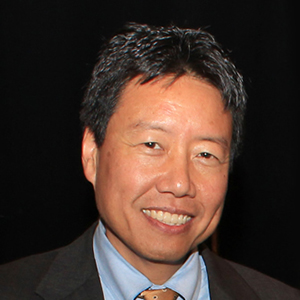The 232 million migrant workers throughout the world, to use the International Labor Organization’s estimate, would amount to the world’s fifth most populous nation. They face universally poor conditions—low wages, harsh working environments, discrimination, and poverty.
Kent Wong is director of the University of California–Los Angeles Labor Center and founding president of the Asian Pacific American Labor Alliance, AFL-CIO. His latest publication is Dreams Deported-Immigrant Youth and Families Resist Deportation.

The United States is home to 11 million undocumented immigrants. A national campaign for legalization and a path to citizenship has repeatedly been blocked in Congress. But immigrant workers are actively forming and joining unions. Their emergence as a powerful force bodes well for the future of the U.S. labor movement and is an inspiration to other workers struggling for justice and dignity in the U.S. and throughout the world.
The world’s first May Day, which took place in Chicago in 1886 during the fight for the eight-hour day, was led in large part by immigrant workers from Ireland, Italy, Poland, Russia, England, and Germany. One hundred twenty years later, May Day in the U.S. was also led by immigrant workers, but they were from Mexico, El Salvador, Guatemala, China, the Philippines, Korea, and the Caribbean.
The largest International Workers Day in U.S. history took place on May 1, 2006, and reflected the incredible energy and power of the immigrant worker movement. In New York, Chicago, San Francisco, Dallas, Seattle, and Atlanta, millions took to the streets. The largest demonstration took place in Los Angeles, with two marches, each attended by half a million people.
The massive May Day mobilizations came in response to draconian legislation in Congress to criminalize immigrants and those who support them. Although HR 4437 was ultimately defeated, the debate on immigration policy continues without resolution.
Ironically, the largest International Workers Day demonstration in U.S. history was not led by the U.S. labor movement but by immigrant workers themselves. Indeed, many unions were missing in action on that May Day, a sign that their leaders had still not embraced the call to organize immigrant workers.
Los Angeles has emerged as a focal point for the new American labor movement, and a crucial part of this change has been the dynamic campaigns involving and often led by immigrant workers. From janitors and hotel workers to home care workers, hundreds of thousands of new immigrants have joined the labor movement in California. In the last few years, one campaign led by the AFL-CIO and United Steelworkers of America has successfully organized workers in more than 30 car washes in Southern California.
The immigrant worker movement extends beyond traditional union structures to include new worker centers. These centers engage many who are explicitly denied coverage under the National Labor Relations Act, including domestic, agricultural, and informal-sector workers and those wrongfully classified as independent contractors. When Congress enacted the NLRA, certain groups of workers were deliberately excluded, especially workers of color and women such as African-American agricultural workers from the South, Latino farmworkers from the Southwest, and domestic workers throughout the country.
The worker center movement grew out of the need for workers to join together to fight for fair wages and working conditions, for immigrant rights, and for mutual aid and support. These centers in many ways mirror the origins of the American labor movement, where workers came together for mutual benefit within certain trades and crafts and in specific communities.
National debate on immigration policy first erupted at the AFL-CIO convention in Los Angeles in 1999. When a group of day laborers organized a contingent to join the convention, they were thrown out by union members who opposed immigrant workers. It was not uncommon at that time for union leaders to call immigration authorities to demand deportation of day laborers seeking work on street corners.
In the following months, however, and for the first time in history, the AFL-CIO reversed its position to embrace a stand in favor of immigrant rights. Fourteen years later, in 2013, the AFL-CIO convention returned to Los Angeles, and the remarkable change in immigration policy was evident. The AFL-CIO gave a human rights award to the International Domestic Workers Alliance. Domestic workers from the U.S. were joined by women representatives from the developing world and together they marched onto the convention floor singing. Day laborers, including some who had been ejected 14 years earlier, were featured on the stage. Tefere Gebre was elected first vice president of the AFL-CIO, the first immigrant and first African-American man to hold a top officer position. Bhairavi Desai, the executive director of the National Taxi Workers Alliance, was elected to the AFL-CIO executive council, the first South Asian and first worker center representative.
The change in the AFL-CIO convention from 1999 to 2013 was extraordinary. The leaders of the American labor movement now embrace labor-community alliances, partnerships between unions and worker centers, the fight for immigrant rights and a path to citizenship for 11 million undocumented immigrants, and an end to deportations.
The American labor movement will be well served if it continues to advance an aggressive campaign to organize immigrant workers and to build a new labor movement for the new working class.

For the Future of Work, a special project from the Center for Advanced Study in the Behavioral Sciences at Stanford University, business and labor leaders, social scientists, technology visionaries, activists, and journalists weigh in on the most consequential changes in the workplace, and what anxieties and possibilities they might produce.



